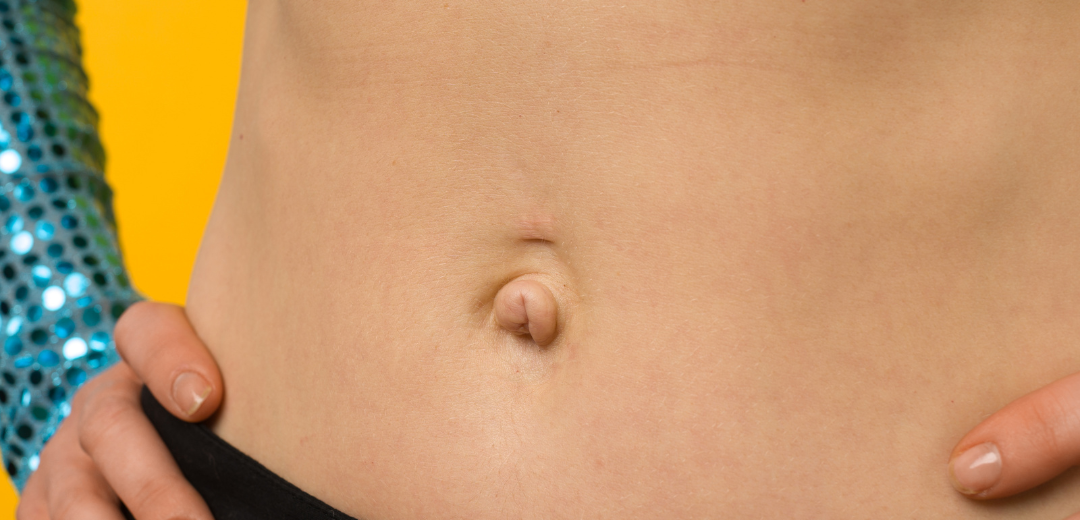Umbilical hernias are a bit different than other types of hernias. To understand them better, lets look at umbilical hernia symptoms and treatment.
What is an Umbilical Hernia?
An umbilical hernia occurs when part of your intestine bulges out through an opening in your abdominal muscles, near your belly button. These hernias are common and usually harmless. While they occur most often in infants, they can affect adults as well.
Typically, umbilical hernias in children close on their own during the first few years. However, some don’t close and as an adult, you may need surgical repair.
What Causes Umbilical Hernia 
The most common causes of adult umbilical hernias are:
- Chronic cough
- Repetitive vomiting
- Prolonged constipation
- Carrying excessive belly fluid
- Difficulty urinating due to an enlarged prostate
- Obesity
- Straining during childbirth or heavy lifting
Umbilical Hernia Symptoms and Treatment
In infants, the most common symptom of umbilical hernia is a protrusion near the belly button. This may be especially noticeable when the baby cries. A provider will exam the area and determine if the hernia can be pushed back into the abdominal cavity. He will also check to see if the hernia has become incarcerated (trapped). This is a serious condition which requires immediate surgery. Symptoms include:
- Abdominal pain and tenderness
- Vomiting
- Fever
- Full, round abdomen
- Constipation
- Fever
- Red, purple, dark, or discolored bulge
Finally, let’s talk about how umbilical hernias are treated. As we mentioned before, over 90% of umbilical hernias close before a child turns five. However, in some cases, they don’t. These hernias may be harmless but, in some cases, surgical repair is necessary. If the hernia is still present after 5, is not reducible, or become bigger, your provider may recommend surgical repair.
Surgical Repair of Umbilical Hernia
During hernia repair, the patient is placed under general anesthesia. The provider makes a small incision in the umbilicus. Then, the loop of intestine is moved back into the abdominal cavity. Finally, the incision is closed. Some cases may require a piece of mesh material to help strengthen the area and prevent a recurrent hernia.
To learn more about umbilical hernia symptoms and treatment, please contact Maryland Bariatrics today.





